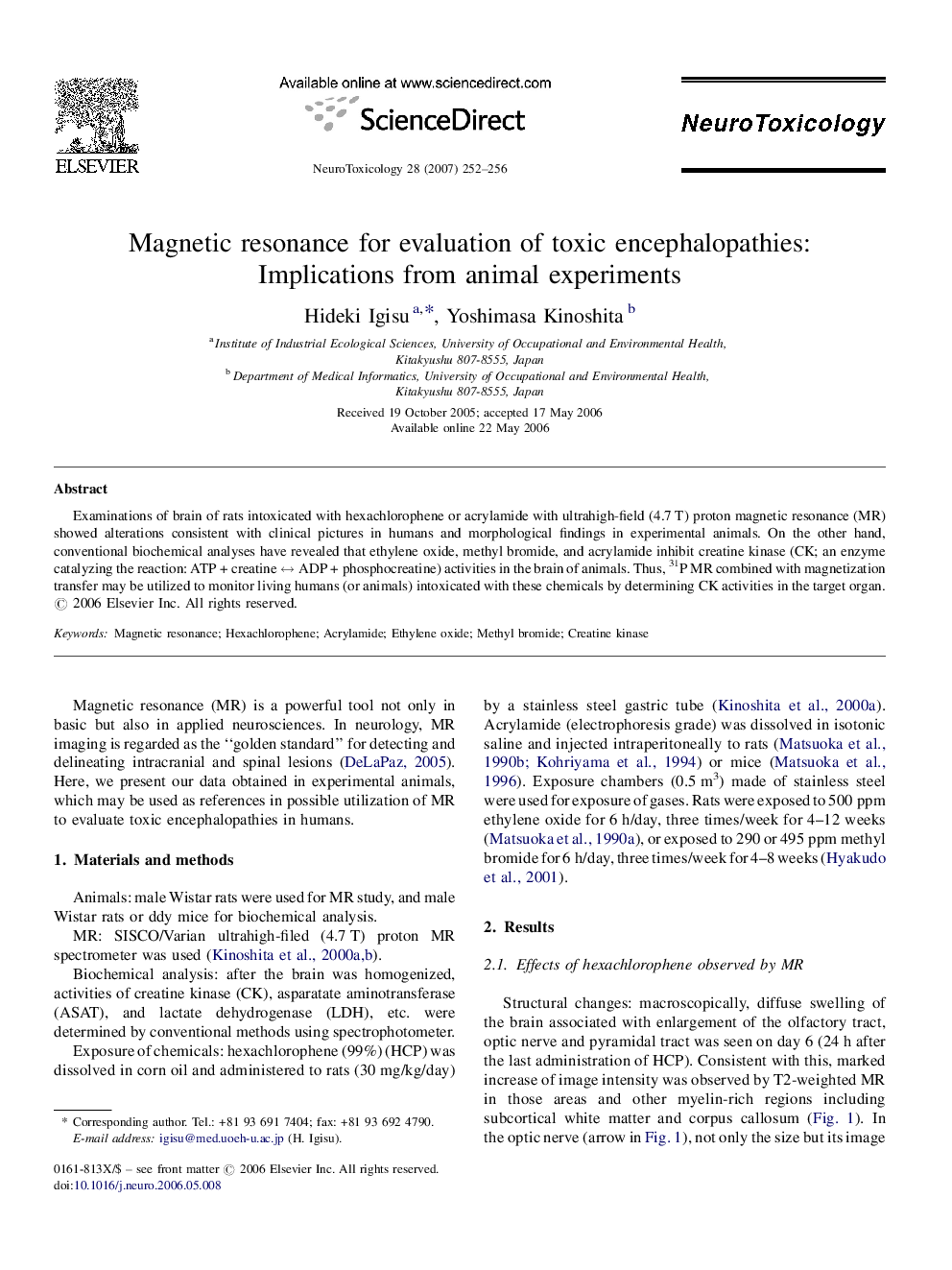| Article ID | Journal | Published Year | Pages | File Type |
|---|---|---|---|---|
| 2590721 | NeuroToxicology | 2007 | 5 Pages |
Abstract
Examinations of brain of rats intoxicated with hexachlorophene or acrylamide with ultrahigh-field (4.7 T) proton magnetic resonance (MR) showed alterations consistent with clinical pictures in humans and morphological findings in experimental animals. On the other hand, conventional biochemical analyses have revealed that ethylene oxide, methyl bromide, and acrylamide inhibit creatine kinase (CK; an enzyme catalyzing the reaction: ATP + creatine ↔ ADP + phosphocreatine) activities in the brain of animals. Thus, 31P MR combined with magnetization transfer may be utilized to monitor living humans (or animals) intoxicated with these chemicals by determining CK activities in the target organ.
Related Topics
Life Sciences
Environmental Science
Health, Toxicology and Mutagenesis
Authors
Hideki Igisu, Yoshimasa Kinoshita,
